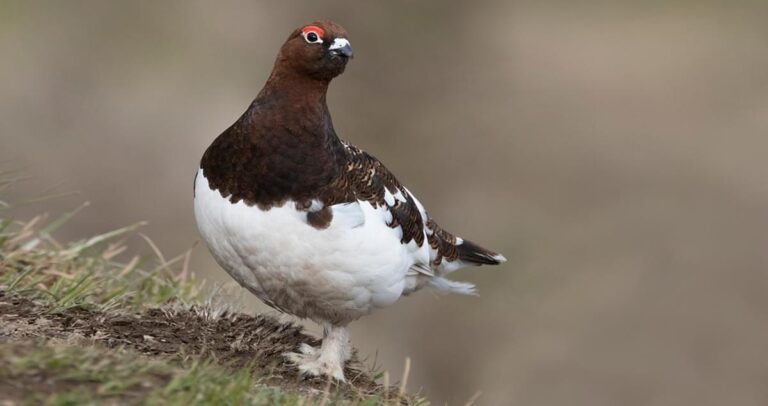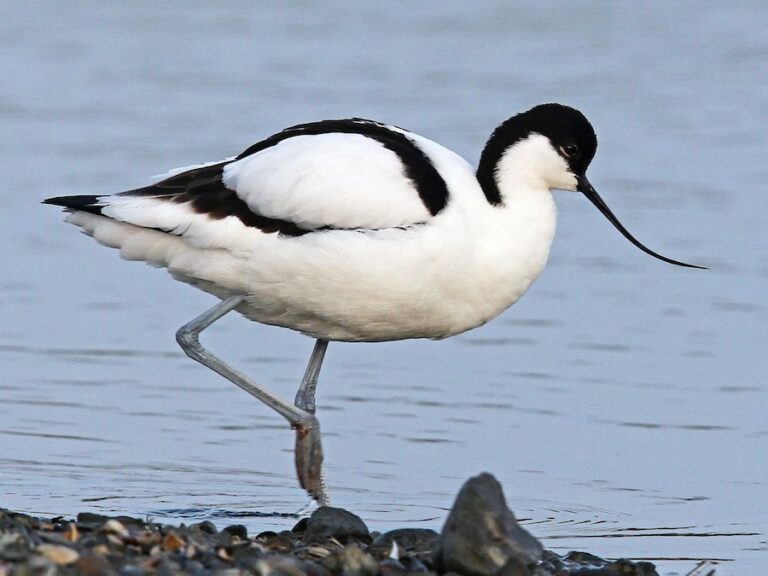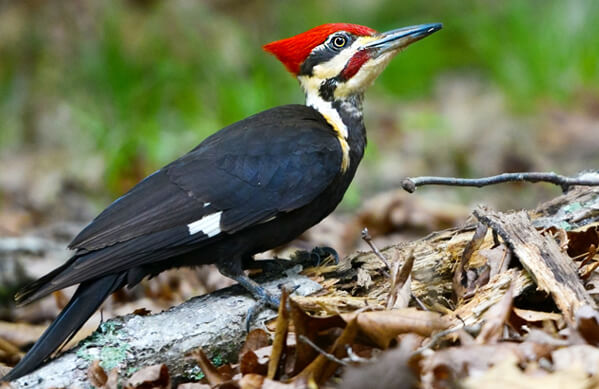All About Baby Mourning Doves: Facts, Care, and How to Help
The only place where the baby mourning doves can be found commonly in the world is in the Americas, and this bird belongs to the Columbidae family of birds which has a lot of other relatives such as the doves and pigeons. Just like many other kinds of pigeons and doves, the Mourning dove is a very widespread fowl species and one of the common birds in North America.
When it comes to Mourning doves, these birds can be found in plenty but their young ones do remain a bit of an enigma. For those who love to learn about Mourning doves, this is a guide to baby Mourning doves, and you will find plenty of pictures of baby doves here as we go along the guide!
What Are Baby Mourning Doves?
Baby mourning doves, or “squabs,” are the chicks of the mourning dove (Zenaida macroura), a bird that’s known for its soft cooing sounds and distinctive long tail feathers. These adorable baby birds are born helpless, relying completely on their parents for warmth, protection, and food.
In this post, we’ll dive into everything you need to know about baby mourning doves—from their life cycle and how they grow, to tips on how to care for them if you find one that needs help.

The Life Cycle of Baby Mourning Doves
Mourning doves are known for being excellent parents, sharing the responsibility of raising their young. Here’s a breakdown of their life cycle:
1. Egg Laying & Incubation
Mourning doves are monogamous, meaning they mate for life or at least for one season. The female lays two white, glossy eggs, usually spaced a day or two apart. These eggs are about 1.1 inches long and are often laid in a shallow nest made of twigs, grass, and leaves.
The parents take turns incubating the eggs. The male usually takes the early shift, while the female incubates later in the day. The eggs are incubated for 14–15 days until they hatch.
2. Hatching of Baby Mourning Doves
Once the eggs hatch, the baby mourning doves are still incredibly fragile. These chicks are born altricial, meaning they are born without feathers, blind, and unable to move on their own. They rely entirely on their parents for food and warmth during the first few weeks of life.
The parents will feed the squabs a substance called pigeon milk (a secretion from the crop gland), which is incredibly nutrient-dense and helps the chicks grow quickly.
3. Feeding and Growth
For the first 5–7 days of their life, baby mourning doves rely solely on pigeon milk. This food is packed with fat and protein, making it ideal for rapid growth. After the first week, the baby doves start to get more active and begin transitioning to solid food, like seeds and small grains. The parents continue to feed them by regurgitating food into their mouths until they can start eating independently.
4. Fledging: When Baby Mourning Doves Leave the Nest
At around 14–20 days old, the baby mourning doves are ready to leave the nest. However, they’re not fully independent yet. Fledglings often stay close to their parents, calling for food and care even after they’ve left the nest. They are still learning how to fly and forage on their own, so the parents will continue to look after them.
Also, read about 3 Types Of Doves in Illinois (ID Guide)
What Do Baby Mourning Doves Look Like?
At birth, baby mourning doves look nothing like their adult counterparts. They have soft, light-coloured down covering their tiny bodies. As they grow, they develop feathers and begin to resemble their parents, with a greyish-brown hue and long, pointed tails.
A baby mourning dove’s eyes will open around 7–10 days after hatching, and it will start becoming more active, perching and stretching its wings.
Key Features of Baby Doves:
- Size: Very small at birth (about the size of a marble), but they grow quickly.
- Color: Initially covered in down feathers, with soft light brown or grey tones.
- Behavior: Timid and quiet, often staying close to the nest.
How to Care for Baby Mourning Doves
If you come across an injured or abandoned baby mourning dove, it’s important to know how to care for it. While the best thing you can do is leave it to the parents, sometimes that’s not an option.

1. Is It Really Abandoned?
Before intervening, observe the baby mourning dove for a while. If it looks like it’s in immediate danger (from predators, pets, or traffic), it may need help. However, if it’s just hopping around the ground, its parents are probably nearby.
Tip: Mourning doves are protective but may not return if you’re too close. Keep your distance and monitor the situation.
2. What to Feed a Baby Mourning Dove
If you need to feed the baby dove, you can offer specialized bird food. Don’t feed it cow’s milk, bread, or other foods that aren’t suited for birds.
- Pigeon Milk Substitute: For a homemade formula, mix finely ground seeds (like millet or sunflower) with water to create a paste.
- Hand-feeding: Use a small syringe or dropper to carefully offer the food. Be gentle—baby birds can choke easily.
3. Keeping the Baby Dove Warm
Newborn mourning doves rely on their parents’ warmth, so you need to keep the baby warm. If you’ve taken it inside, make sure to provide a warm, quiet area. You can use a heating pad on low or place a warm towel around the bird. Ensure it doesn’t overheat.
4. When to Contact a Wildlife Rehabilitator
If the baby mourning dove is injured or you’re unsure about how to care for it, your best option is to contact a local wildlife rehabilitator or animal rescue service. They have the expertise to care for the bird properly.
Mourning Dove Nesting and Baby Care Tips
How to Prevent Baby Doves from Falling Out of Nests:
- Keep cats and pets away from areas where mourning doves nest.
- Add a railing or ledge to prevent baby doves from falling off of window ledges or other high spots.
- Provide artificial nesting sites: If you have mourning doves nesting on your property, consider offering a safe nesting platform or birdhouse to help them feel secure.
Must explore Doves of Alabama
Baby Mourning Doves vs. Other Baby Birds: What’s the Difference?
Mourning dove chicks might seem similar to other baby birds, but there are a few key differences:
- Feeding Habits: While many baby birds eat insects or worms, mourning dove chicks rely on pigeon milk and then transition to seeds and grains.
- Growth Rate: Baby mourning doves grow relatively quickly, becoming independent after just 14–20 days.
- Parental Involvement: Both parents share the responsibility of raising their chicks, which is less common in some bird species.
FAQs About Baby Mourning Doves
Q: How long do baby mourning doves stay with their parents?
A: Baby mourning doves typically leave the nest at 14–20 days, but they will still rely on their parents for food and care for a while.
Q: What should I do if I find a baby mourning dove on the ground?
A: Observe the bird for a while. If the parents are nearby, they will likely continue to care for the chick. If the bird is injured or appears to be abandoned, contact a wildlife rehabilitator.
Q: Can I raise a baby mourning dove on my own?
A: Raising a baby mourning dove requires specialized knowledge, as they have very specific feeding needs. It’s best to contact a wildlife rehabber to ensure the chick receives proper care.
Q: How can I help protect mourning dove nests?
A: Keep pets and predators away from nesting sites. If you’re in an area with a lot of traffic, try to offer safe spaces for mourning doves to nest.
Final Thoughts
Baby mourning doves are delicate creatures that require a lot of care and attention. Understanding their life cycle and the proper way to assist them if you come across an orphaned squab can make all the difference. Remember, if you’re unsure about how to help a baby mourning dove, it’s always best to contact a wildlife rehabilitator.
By protecting their nesting sites and knowing what to do in case of an emergency, you can ensure that these beautiful birds thrive in your local ecosystem.
Ready to learn more about caring for doves and other wildlife?
Check out our bird care guide for tips on how to create a safe, supportive environment for your feathered friends.







